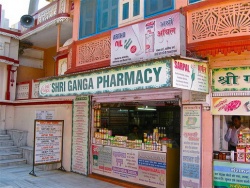Difference between revisions of "Agada"
| Line 4: | Line 4: | ||
[[阿伽陀]] (Skt, [[Pali]]; Jpn [[akada]] ) | [[阿伽陀]] (Skt, [[Pali]]; Jpn [[akada]] ) | ||
| − | A [[medicine]] in {{Wiki|ancient India}}, believed to be most effective in curing {{Wiki|disease}}. [[Agada]] is also a common noun for [[medicine]]. The beginning a of [[agada]] means not, non-, or without, and gada means {{Wiki|disease}} or [[sickness]]. | + | A [[medicine]] in {{Wiki|ancient India}}, believed to be most effective in curing {{Wiki|disease}}. [[Agada]] is also a common {{Wiki|noun}} for [[medicine]]. The beginning a of [[agada]] means not, non-, or without, and [[gada]] means {{Wiki|disease}} or [[sickness]]. |
| − | [[Agada]] is one of the eight branches into which [[ayurveda]] [[medicine]] is [[traditionally]] divided. Literally, [[gada]] means a {{Wiki|disease}} and [[agada]] means any agent which makes the [[body]] free from {{Wiki|disease}}; however the term [[agada]] is used specifically for the branch dealing with toxicology, the description of the different types of [[poisons]], and their [[antidotes]]. | + | [[Agada]] is one of the [[eight branches]] into which [[ayurveda]] [[medicine]] is [[traditionally]] divided. Literally, [[gada]] means a {{Wiki|disease}} and [[agada]] means any agent which makes the [[body]] free from {{Wiki|disease}}; however the term [[agada]] is used specifically for the branch dealing with {{Wiki|toxicology}}, the description of the different types of [[poisons]], and their [[antidotes]]. |
| + | |||
| + | [[Agada]] [[Tantra]] is defined as a section of {{Wiki|toxicology}} that deals with [[food]] poisoning, snakebites, {{Wiki|dog}} bites, insect bites, etc. The school of {{Wiki|toxicology}} was founded and run by [[Kashyapa]], also known as [[Vriddhakashyapa]], another contemporary of [[Atreya]] {{Wiki|Punarvasu}}. He lived in Taksashila in what is now modern-day {{Wiki|Pakistan}}. His text was called the [[Kashyapa Samhita]]. This, however, is a different [[book]] than the [[Kashyap Samhita]] of {{Wiki|pediatrics}}. This text is not available now but the references of this text are found mentioned in different commentaries. Some other texts written by [[Alambayana]], [[Ushana]], [[Saunaka]], and [[Latyayana]] were known to [[exist]]. However except for references to them, the original texts are no longer available. | ||
| + | |||
| + | Syn: [[Panacea]]. | ||
| + | |||
| + | A [[panacea]], a “cure-all”, a remedy for all {{Wiki|diseases}} and [[evils]]. All methods and [[schools of Buddhism]] are best – best for a particular group, at a particular time. | ||
| + | |||
| + | This is why the [[Buddha]] extolled all [[sutras]] as being foremost, as being [[kings]] of the [[Dharma]]. | ||
| + | |||
| + | Of all these methods and schools, the one that is considered foremost and at the same time a panacea is [[Pure Land]]. [[Pure Land]] is a cure-all because it applies to [[people]] of all capacities and walks of [[life]]. | ||
| + | |||
| + | See also: [[Pure Land Buddhism]] | ||
| − | |||
The [[traditional]] practice of {{Wiki|toxicology}} is still practiced by different families of [[vishavaidyas]] ([[poison]] [[doctors]]) who specialize in {{Wiki|toxicology}}. However, their [[knowledge]] is limited compared to the [[knowledge]] possessed by the earlier [[ayurvedic]] physicians. In {{Wiki|ancient}} times, it was the job of [[Vishavaidyas]] to {{Wiki|protect}} members of the {{Wiki|royal}} families from being poisoned, as well to [[poison]] enemies of the [[kings]]. | The [[traditional]] practice of {{Wiki|toxicology}} is still practiced by different families of [[vishavaidyas]] ([[poison]] [[doctors]]) who specialize in {{Wiki|toxicology}}. However, their [[knowledge]] is limited compared to the [[knowledge]] possessed by the earlier [[ayurvedic]] physicians. In {{Wiki|ancient}} times, it was the job of [[Vishavaidyas]] to {{Wiki|protect}} members of the {{Wiki|royal}} families from being poisoned, as well to [[poison]] enemies of the [[kings]]. | ||
Latest revision as of 04:42, 13 December 2015
agada
阿伽陀 (Skt, Pali; Jpn akada )
A medicine in ancient India, believed to be most effective in curing disease. Agada is also a common noun for medicine. The beginning a of agada means not, non-, or without, and gada means disease or sickness.
Agada is one of the eight branches into which ayurveda medicine is traditionally divided. Literally, gada means a disease and agada means any agent which makes the body free from disease; however the term agada is used specifically for the branch dealing with toxicology, the description of the different types of poisons, and their antidotes.
Agada Tantra is defined as a section of toxicology that deals with food poisoning, snakebites, dog bites, insect bites, etc. The school of toxicology was founded and run by Kashyapa, also known as Vriddhakashyapa, another contemporary of Atreya Punarvasu. He lived in Taksashila in what is now modern-day Pakistan. His text was called the Kashyapa Samhita. This, however, is a different book than the Kashyap Samhita of pediatrics. This text is not available now but the references of this text are found mentioned in different commentaries. Some other texts written by Alambayana, Ushana, Saunaka, and Latyayana were known to exist. However except for references to them, the original texts are no longer available.
Syn: Panacea.
A panacea, a “cure-all”, a remedy for all diseases and evils. All methods and schools of Buddhism are best – best for a particular group, at a particular time.
This is why the Buddha extolled all sutras as being foremost, as being kings of the Dharma.
Of all these methods and schools, the one that is considered foremost and at the same time a panacea is Pure Land. Pure Land is a cure-all because it applies to people of all capacities and walks of life.
See also: Pure Land Buddhism
The traditional practice of toxicology is still practiced by different families of vishavaidyas (poison doctors) who specialize in toxicology. However, their knowledge is limited compared to the knowledge possessed by the earlier ayurvedic physicians. In ancient times, it was the job of Vishavaidyas to protect members of the royal families from being poisoned, as well to poison enemies of the kings.
